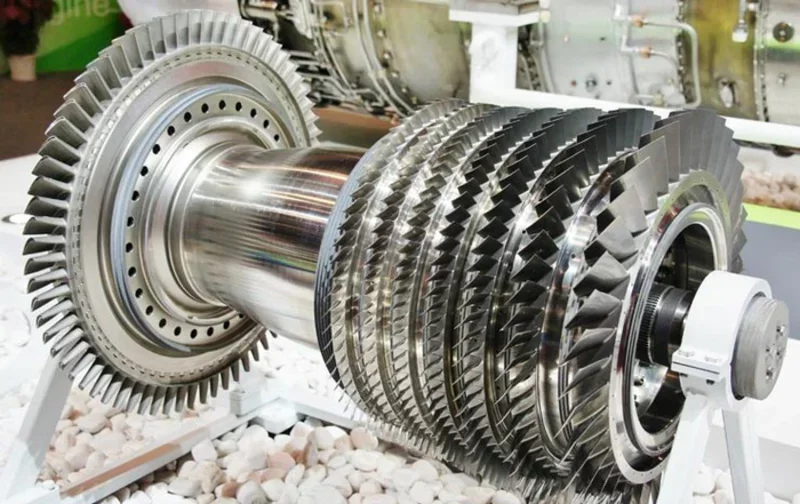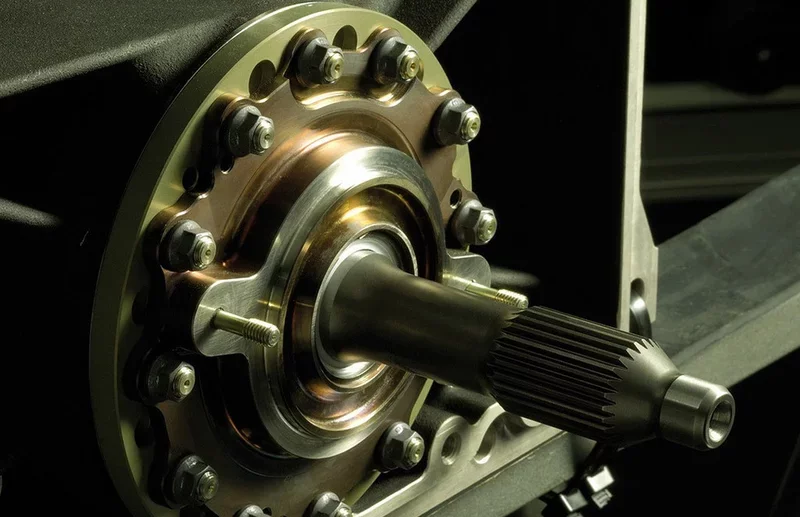Precision Engineering in the Sky: Aerospace CNC Machining
With a global worth exceeding $800 billion, the aerospace industry thrives on constant innovation, consistently pushing the boundaries of manufacturing practices and technologies. In this dynamic landscape, aerospace CNC machining has emerged as a pivotal element for aerospace companies. The reasons behind its prominence are evident.
Safety takes on paramount importance when it comes to producing parts for aircraft and related systems. Irrespective of the nature of the aerospace manufacturing project, every single component must adhere to the most stringent industry standards. The production and assembly of an aircraft leave no room for human error. Even the tiniest interior detail or the plane’s exterior must be flawless, as any imperfections or inconsistencies can lead to catastrophic consequences.

Given the industry’s demand for an exceptionally high level of precision, CNC machining has become the ideal manufacturing process for aerospace applications. Its ability to achieve remarkably tight tolerances for both metal and plastic parts makes it a robust solution in the aerospace sector.
What is Aerospace CNC Machining?
Aerospace CNC machining refers to the use of Computer Numerical Control (CNC) machines in the manufacturing and production of aerospace components and parts. CNC machining is a manufacturing process where computer-controlled machines are utilized to precisely and accurately remove material from a workpiece to create the desired shape and dimensions.
In the aerospace industry, where safety, precision, and reliability are of utmost importance, CNC machining plays a critical role in producing high-quality components for aircraft, spacecraft, and related systems. It allows for the fabrication of complex geometries, tight tolerances, and intricate features required in aerospace applications.
Importance of CNC Machining in Aerospace
CNC machining plays a crucial role in the aerospace industry and holds significant importance for several reasons:
Precision and Accuracy
The aerospace industry demands an exceptionally high level of precision and accuracy in the manufacturing of components. CNC machining offers superior control and repeatability, allowing for the production of complex geometries and tight tolerances. This precision CNC machining ensures that aerospace parts fit together seamlessly, ensuring safety, reliability, and optimal performance.
Efficiency and Productivity
CNC machining offers automated and computer-controlled operations, enabling efficient and consistent production processes. It eliminates the need for manual adjustments, reducing the risk of errors and improving productivity. With CNC machining services, machines can operate continuously, reducing downtime and optimizing the utilization of resources.
Versatility and Flexibility
Aerospace CNC machining can work with a wide range of materials, including metals, composites, and plastics. This versatility allows for the production of diverse aerospace components, ranging from engine parts to airframe structures and interior components. CNC machines can also accommodate design changes and produce customized parts with ease, making them highly adaptable to evolving industry requirements.
Complex Geometries and Intricate Features
Aerospace components often feature intricate designs, complex shapes, and challenging geometries. CNC machining excels in machining such complex features, including 3D contours, tapered surfaces, pockets, and holes with high precision and repeatability. This capability is essential in producing critical parts that meet the stringent requirements of the aerospace industry.
Quality Assurance and Traceability
CNC machining processes and offers robust quality control measures, ensuring that each manufactured part meets the required standards and specifications. The use of CAD/CAM software enables precise design verification and simulation, minimizing the risk of errors or deviations. Additionally, CNC machining allows for traceability of the manufacturing process, providing documentation and data for quality assurance, audits, and regulatory compliance.
Innovation and Advanced Manufacturing
The aerospace industry is continuously evolving, with advancements in materials, designs, and technologies. CNC machining keeps pace with these innovations, incorporating advanced techniques such as multi-axis machining, high-speed machining, and additive manufacturing. It enables the production of lightweight components, optimization of part performance, and the integration of new materials and composites for aerospace manufacturers.
Aerospace Machining Process

The aerospace machining process involves several steps to manufacture high-precision components for the aerospace industry. Here is a general outline of the precision CNC machining process:
Design and Engineering
Aerospace components are designed using Computer-Aided Design (CAD) software, taking into account the specific requirements and performance characteristics.
Engineers define the geometries, dimensions, tolerances, and material specifications of the component.
Material Selection
Based on the design requirements, engineers select suitable materials such as aluminum, titanium, stainless steel, or composites for the aerospace component.
Material properties and characteristics are considered, including strength, weight, corrosion resistance, and thermal stability.
Programming and Toolpath Generation
CNC (Computer Numerical Control) programs are created using Computer-Aided Manufacturing (CAM) software.
Engineers define the toolpaths, cutting strategies, feed rates, and other parameters to optimize the machining process.
Setup and Fixturing
The workpiece, typically a metal billet or a preformed part, is securely mounted in a CNC machine.
Fixtures and clamps are used to hold the workpiece in position and ensure stability during machining.
CNC Machining Operations
CNC machines, including mills, lathes, and multi-axis machining centers, are used to perform various operations based on the component’s design.
Machining operations can include milling, turning, drilling, boring, reaming, tapping, and threading.
Advanced precision CNC machining techniques such as high-speed machining and multi-axis machining may be employed for complex geometries and intricate features.
Finishing Operations
After the primary machining operations, finishing operations are conducted to achieve the desired surface finish, dimensional accuracy, and tolerances.
Finishing operations may include deburring, polishing, grinding, honing, or lapping.
Inspection and Quality Control
The machined components undergo a rigorous inspection to ensure they meet the specified tolerances and quality standards.
Various inspection techniques, such as coordinate measuring machines (CMM), optical scanners, or visual inspections, are employed.
Non-destructive testing methods like X-ray, ultrasonic, or dye penetrant inspections may be utilized for critical components.
Surface Treatments and Coatings
Depending on the component requirements, surface treatments and coatings may be applied to enhance properties such as corrosion resistance, wear resistance, or thermal protection.
Common treatments include anodizing, plating, painting, heat treatments, or applying specialized coatings like thermal barrier coatings (TBC) or anti-corrosion coatings.
Assembly and Integration
Machined components are integrated into larger assemblies, such as engines, airframes, landing gear, or control systems.
Components are carefully fitted, aligned, and joined using various methods, including welding, fastening, adhesives, or brazing.
Testing and Certification
The assembled aerospace system or component undergoes rigorous testing, including functional testing, stress testing, vibration testing, or environmental testing.
Testing ensures compliance with industry standards, regulations, and safety requirements.
Once testing is successfully completed, the aerospace component or system receives certification for use in aircraft or space vehicles.
5 Axis CNC Machining in Aerospace Industry
5-axis machining plays a vital role in the aerospace industry, where complex geometries and intricate features are common in components. It offers numerous advantages over traditional 3-axis machining, enabling more efficient and accurate production of aerospace parts. Here are some key aspects of 5-axis machining in the manufacturing aerospace parts industry:
Enhanced Flexibility and Versatility
5-axis machining allows for simultaneous movement of the cutting tool along five axes: X, Y, Z, as well as rotational motion around the X and Y axes. This flexibility enables machining operations from multiple angles and orientations, making it easier to reach complex features and contours on aerospace components.
Complex Geometry Machining
Aerospace components often have intricate shapes, curved surfaces, and contoured profiles. 5-axis machining can accurately machine these complex geometries without the need for multiple setups or repositioning the workpiece. It enables machining undercuts, chamfers, bevels, and other challenging features with ease.
Reduced Setups and Improved Accuracy
With 5-axis machining, multiple sides of the workpiece can be machined in a single setup, minimizing the need for repositioning and reducing setup time. This improves accuracy and reduces cumulative errors that may arise from multiple setups. The continuous movement of the cutting tool along various axes ensures consistent tool engagement and optimal surface finishes.
Increased Efficiency and Productivity
5-axis machining allows for shorter production cycles and higher throughput. It eliminates the need for manual repositioning and reduces idle time, leading to less manufacturing costs and improved efficiency. Additionally, complex components can be machined in one operation, reducing overall manufacturing time and costs.
Machining of Hard-to-Reach Areas
Aerospace components often have internal features or areas that are challenging to access with traditional machining approaches. 5-axis machining provides the ability to machine these difficult-to-reach areas with greater ease and accuracy. It allows for improved tool access, reducing the need for specialized tooling or additional operations.
Toolpath Optimization
5-axis machining enables optimized toolpath strategies, minimizing unnecessary tool movements and reducing cycle times. Advanced CAM software and simulation tools help generate efficient toolpaths, ensuring collision-free machining and maximizing material removal rates. This leads to improved productivity and cost-effectiveness.
High-Quality Surface Finishes
5-axis machining can achieve superior surface finishes on aerospace components due to the ability to maintain consistent tool engagement and orientation. This is crucial for critical parts that require high aesthetics, aerodynamic performance, or reduced drag.
In summary, 5-axis machining has revolutionized the aerospace industry by providing enhanced flexibility, improved accuracy, increased efficiency, and the ability to machine complex geometries. It has become an indispensable technology for manufacturing intricate aerospace components, such as turbine blades, engine casings, airfoils, and structural parts. Its advantages contribute to the production of high-quality, high-performance aerospace systems and aircraft.
Conclusion
In conclusion, aerospace CNC machining is a vital process in the aerospace industry, offering numerous advantages and capabilities. It has revolutionized the manufacturing of aircraft components by providing precision, accuracy, and efficiency.
Looking ahead, the future of aerospace CNC machining holds exciting possibilities. Advancements in machine technology, integration of additive manufacturing (3D printing), and the implementation of artificial intelligence and machine learning are anticipated to further enhance the capabilities and efficiency of aerospace CNC machining.
Overall, aerospace CNC machining has proven to be indispensable in the aerospace industry, enabling the production of high-quality, precise, and efficient components. With continued advancements and innovation, it will play a pivotal role in shaping the future of aerospace manufacturing.